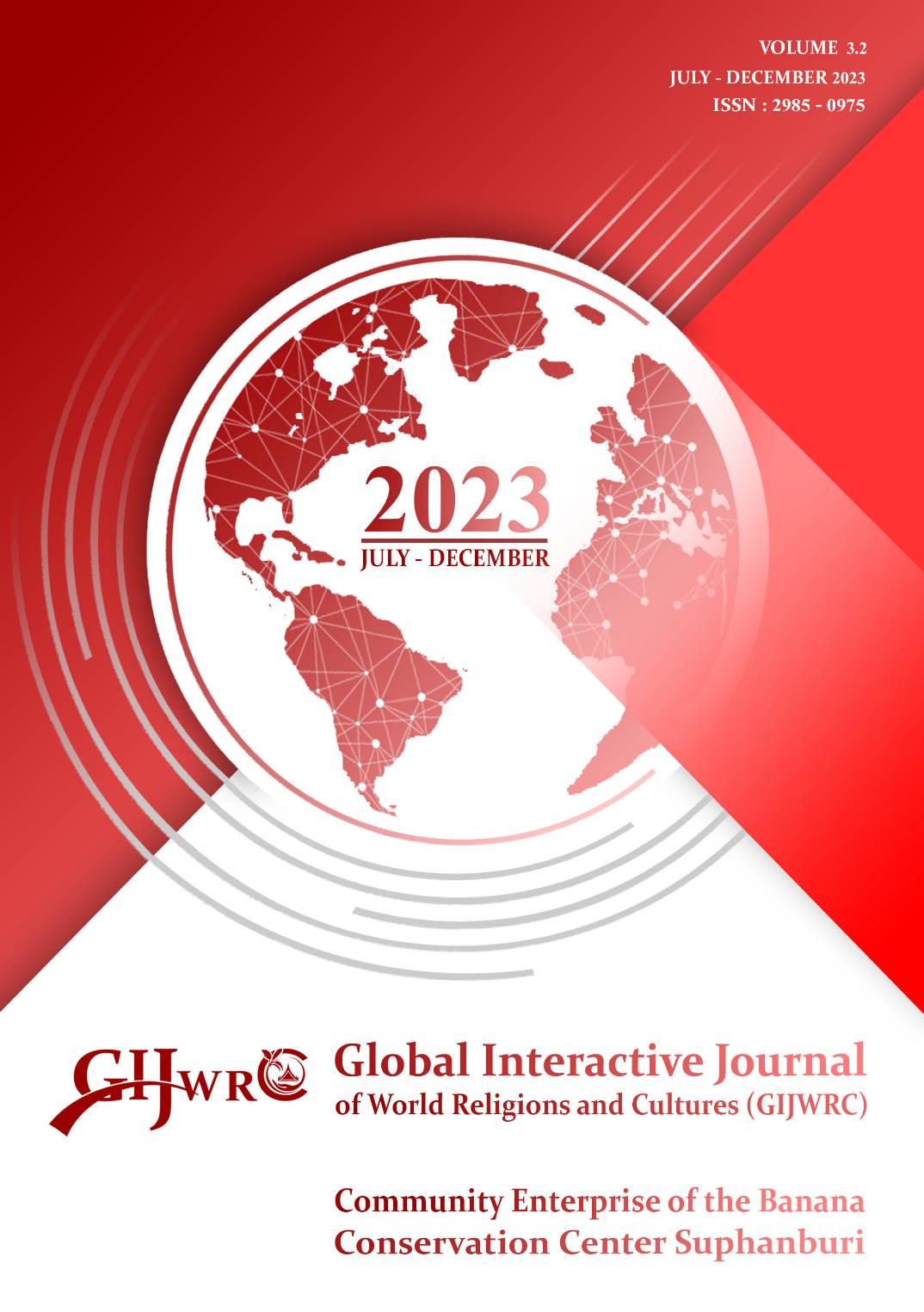LAO KRANG COMMUNITY’S IDENTITY ACCORDING TO BUDDHISM
Main Article Content
Abstract
The research entitled “Lao Krang Community's Identity According to Buddhism” aims to study 1) To analyze the identity of the Lao Krang community in Nakhon Pathom Province. 2) To analyze the identity of the Lao Krang community in Nakhon Pathom Province according to Buddhism. 3) To analyze the identity of the Lao Krang community in Nakhon Pathom Province according to the Buddhist principles.
This research was the qualitative research, which emphasized documentary research and field research by using interview forms as a tool for data collections, participatory observation and following sequence of steps. In the related researches, literature and documentary exploration, it was to study the theoretical concept of the Lao Krang community identity analysis, their identity analysis in according to Buddhism and according to the Buddhist principles in Nakhon Pathom Province from primary and secondary data sources. The tool for collecting field data was the interview forms conducted with the purposive samples taken recorded by audio recorder, camera, video camera and note book. A descriptive data analysis had been applied and presented those information and suggestions.
The results show that: The identity of the Lao Krang community in Nakhon Pathom Province, at first the Lao Krang ethnic group combined Lao Song, Lao Wiang, Lao Krang, Chinese and Mon, who later wanted to create new traditions and cultures. This showed that group was very strong and linked to the festival of Songkran flags at Phrong Maduea Temple, merit making ceremony and tradition to raise the spirits in the local language. It showed that the Lao Krang people have long been established. Their beliefs and the important point from this finding. It was assumed that the history has not been recorded in writing but there have been seen from telling stories and a long history from the ancients and growing making merit in ghost belief. The most people in the past thought that raising the spirits leader called Chao Phoe Singhan or Chao Phoe Sai Faa (lightning god) would protect their community members or worshiping ancestral spirits and respecting ghosts and the village gods. In addition, it can be seen from another corners that Buddhism and the Lao Krang rites were not in conflict but uniting Buddhism as the center of harmony and was consistent with the legends found in their rites.
Article Details
References
Bang-on Piyaphan (1986). “History of the Lao community in the inner city in
the early Rattanakosin period”. Master's Degree Thesis. Department of Southeast Asian History. Graduate School: Silpakorn University.
Chanan Wongwiphak (1989). “A study of local history and cultural
assimilation: a specific study of Lao Khrang U-Thong. Suphan Buri Province”. Bangkok: Department of Anthropology Silpakorn University
______(1986). A study of local history and cultural assimilation of Lao
Khrang, Suphan Buri Province. Bangkok: Department of Anthropology Silpakorn University.
Kanuengnuch Piyaboon (1995). “Adaption to changing economic and social
conditions of Lao Khrang at Ban Khok: a case study at Ban Khok, U Thong District, Suphanburi Province”. Master of Arts Thesis. Department of Sociology and Anthropology. Graduate School: Silpakorn University.
Jaruwan Thammawat (1998). Lao way of life in communities on both sides of
the Mekong and the Lao Ethnicity. Hao Village: Others: Jai Ban Jai Mueang. Ubon Ratchathani: Siritham Offset Printing.
Jinda Chatwong (1986). A study of Lao Khrang language characteristics at
Huai Duan Subdistrict, Don Tum District, Nakhon Pathom Province. Bangkok: Silpakorn University.
Phra Sithawatmethee (2016). Ethnic Lao Khrang Suphanburi. Bangkok: Sam
Lada Ltd., Part.
Ratchada Suksaengsuwan (2004). Tai Khang Thai Wiang Fabric. Bangkok:
Wisdom, 2004.
Srisak Walliphodom (1982). Encyclopedia of Ethnic Groups in Thailand.
Bangkok: KMUTT.
Siri Phasuk (2002). Local Silk (Handwoven Thai-silk). Bangkok: Odeon Store. Walleeya Watcharaporn (1991). “A study of suffixes in Lao Khrang
language”. Master of Arts Thesis. Department of Linguistics. Graduate School: Mahidol University.
Wassana Arunkit (1985). “Rituals and Social Structures of Lao Song at Sa
Village, Sa Phatthana Sub-district, Kamphaeng Saen District. Nakhon Pathom Province”. Master of Arts Thesis. Department of Social Sciences. Graduate School: Chulalongkorn University.
Somdet Phra Phutthakhosachan (2016). Buddha Dharma, extended edition.
Bangkok: Pet and Home Publishing Co., Ltd., p.47
Somboon Suksamran (1987) “Religious Beliefs and Rituals of the Chinese
Community”. Research No. 18, Chulalongkorn University. Research Dissemination Project, Chulalongkorn University.


